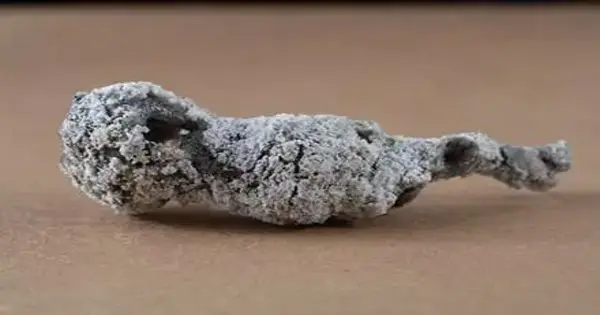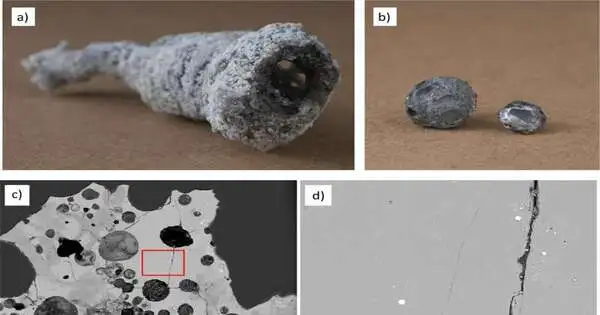A professor from the University of South Florida found that lightning that struck a tree in a New Port Richey neighborhood created a new phosphorus substance. It was discovered in a rock, the first time in solid form on Earth, and it might be a new class of mineral.
According to geoscientist Matthew Pasek, “We have never seen this material occur naturally on Earth—minerals similar to it can be found in meteorites and space, but we’ve never seen this exact material anywhere.”
In a recent study that was published in Communications Earth and Environment, Pasek looks at how high-energy events like lightning can cause unusual chemical reactions and, in this case, result in a new material—one that is transitional between space minerals and minerals found on Earth.
“It’s critical to understand how much energy lightning has because we’ll know how much damage a lightning strike can cause on average and how dangerous it is.” Florida is the world’s lightning capital, and lightning safety is critical—if lightning is powerful enough to melt rock, it can certainly melt humans.”
According to Pasek
According to Pasek, when lightning strikes a tree, the ground typically erupts and the nearby grass dies, leaving a scar. Additionally, the electric discharge from the strike travels through the nearby rock, soil, and sand to form fulgurites, also referred to as “fossilized lightning.”.

Sample of the New Port Richey fulgurite. Credit: Matthew Pasek
The ‘lightning scar’ was found by the New Port Richey homeowners, who decided to sell the fulgurite they had found, assuming it had some value. Luca Bindi, a professor of mineralogy and crystallography at the University of Florence in Italy, was the first person Pasek worked with after buying the object.
In order to better comprehend high-energy phenomena, the team decided to look into unusual minerals that contain the element phosphorus, particularly those formed by lightning.
Understanding the energy of lightning is crucial because it allows us to gauge the average amount of damage and danger that a lightning strike can produce. “Florida is the world’s capital of lightning, and lightning safety is crucial because if a bolt of lightning is powerful enough to melt a rock, it can undoubtedly melt a person as well.”.
According to Pasek, iron will frequently assemble and encrust tree roots in moist environments like Florida. In this instance, the lightning strike ignited both the naturally occurring carbon in the tree and the iron on the tree roots, causing both to catch fire. A chemical reaction between the two substances produced fulgurite, which had the appearance of a metal “glob.”.
A previously unidentified substance was revealed inside the fulgurite as a colorful, crystal-like substance.
The material was attempted to be recreated in a lab by co-principal investigator Tian Feng, a USF geology graduate. The failed experiment suggests that the substance forms quickly under specific circumstances and that, if heated for an extended period of time, it will change into the mineral found in meteorites.
According to earlier studies, phosphate reduction by lightning was a common occurrence on the early Earth, said Feng. However, it is difficult to restore these solid phosphite materials due to a problem with the Earth’s environmental phosphite reservoir.
This research, according to Feng, may show that additional reduced mineral forms are possible and that many of them may have been crucial to the emergence of life on Earth.
Given the rarity of it occurring naturally, Pasek claims that it is unlikely that this material could be mined for uses similar to those of other phosphates, such as fertilizer. To find out if it could be formally classified as a mineral and raise more awareness among scientists, Pasek and Bindi, however, intend to conduct additional research on the substance.
More information: Luca Bindi et al, Routes to reduction of phosphate by high-energy events, Communications Earth & Environment (2023). DOI: 10.1038/s43247-023-00736-2





